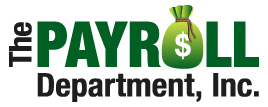Workplace Garnishments: What Your Small Business Needs to Know
When it comes to processing employee’s payroll with multiple garnishments, there is an established hierarchy of which one takes precedence. The Bankruptcy Abuse Prevention and Consumer Protection Act (BAPCPA) was signed into law on April 20, 2005 and enacted on October 17, 2005. Prior to this law, Chapter 13 bankruptcy orders took priority over other garnishments. There was no limit to this federal deduction. Along with consideration for the type of order issued is the date on which it was issued. Date order, earliest to latest, establishes when the set amount begins coming out of employees’ paychecks. If you’re unsure of the pecking order, here’s an overview of some of the most common types of garnishments.
Family First
As stated before, any orders preceding BAPCPA would be extracted from the employee’s pay first. Following that would be family support. This includes orders of alimony and child support. There are limits to this garnishment.
- Up to 50% of employees disposable income may be made available if that person is supporting two families – the one pre-divorce and the family created by a second partnership.
- If there is no second family, up to 60% of employees disposable income is subject to garnishment. An additional 5% is allowed to be garnished if the employee’s payments are more than 12 weeks in arrears. There are circumstances where State law may offer greater protection.
Order in the Court
Second is a Chapter 13 bankruptcy order (issued after 10/17/2005). Although wage garnishment by creditors will cease once the order is issued, the employee still may be required to repay the creditors. Any payments garnished from the employee’s wages during the filing period, before the order was issued, by law, are to be returned by employers to their employee.
Don’t Forget the Feds
A Federal Tax Levy is next on the list. Employers receive guidelines from the IRS for garnishing wages through Form 668-W, “Notice of Levy on Wages, Salary, and Other Income.” This is sent to employers whenever a levy is ordered against one of your employees. Certain funds are exempt from the levy. They include:
- Unemployment benefits
- Workers’ compensation payments
- Pre-existing child support payments; and,
- Certain pension funds.
The employer calculates the amount of the levy by taking a weekly amount equal to the employee’s standard deduction plus personal exemptions allowed for taxable year, divided by 52 (weeks). IRS Publication 1494, “Table for Figuring Amount Exempt from Levy on Wages, Salary, and Other Income” is a helpful resource for small businesses that require a further explanation of this garnishment.
More, More, More…
Following levies, administrative wage garnishments (federal student loans and other federally guaranteed loans); State and local tax levies, and other financial obligations to these entities conclude the list.
As you can see, the laws in place governing wage garnishment take the guess work out of deducting funds. As a small business, you aim to streamline day-to-day processes. This is one facet of your business that is spelled out for you. It’s the law.
-Melissa of The Payroll Department Blog Team
The Payroll Department is a payroll provider, which includes help in handling issues like garnishments among all the payroll services they offer. When entrepreneurs need answers about payroll, payroll taxes and employment, they turn to The Payroll Department.
